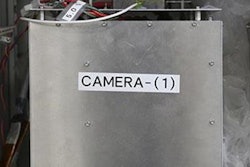Dear Molecular Imaging Insider,
Reducing radiation exposure to patients is always an important priority in imaging, especially so for patients with congenital heart disease who face repeat scans. So what is the best approach to minimize dose and maintain diagnostic image quality?
Researchers from Brigham and Women's Hospital and Boston Children's Hospital in Boston collaborated to compare technetium-99m (Tc-99m) sestamibi SPECT and SPECT/CT against rubidium-82 (Rb-82) and N-13 ammonia with PET and came out with a clear choice. This finding certainly is helpful in directing myocardial perfusion imaging strategies, but it might not always be the best option when balancing less radiation exposure with the best interests of the patient, the researchers noted.
The pros and cons are available in this Inside Exclusive.
In another study, FDG-PET proved superior to amyloid-PET imaging with the radiopharmaceutical florbetapir for assessing cognitive decline in patients with Alzheimer's disease or mild cognitive impairment. Researchers in Pennsylvania found that quantitative FDG-PET achieved a much higher correlation with participant scores on the Mini-Mental Status Examination.
In addition, PET/CT showed its prowess in detecting prostate cancer recurrence with the radiopharmaceutical gallium-68 (Ga-68) prostate-specific membrane antigen (PSMA) in a study from the University of California, Los Angeles. The results are particularly noteworthy in this comparison between Ga-68 PSMA PET/CT and F-18 fluciclovine PET/CT to detect recurrent prostate cancer in 50 patients who previously underwent radical prostatectomy and maintained relatively low prostate-specific antigen.
While the overall utilization of standard myocardial perfusion imaging (MPI) exams has declined, resesearchers have found that cardiologists are performing a greater share of these studies. Their study also showed the volume of PET MPI studies are increasing in cardiology private offices, which raises the recurring issue of self-referrals.
There is no need to go beyond the routine "eyes to thighs" field-of-view with FDG-PET/CT to stage and monitor disease in a majority of pediatric patients with lymphoma. That's the conclusion of an 11-country, multicenter investigation that found that a true whole-body FDG-PET/CT scan, which images from the top of the head to the toes, detected only a handful of lesions missed by the standard field-of-view and did not change the clinical stage of any patient and did not alter any treatment plans.
In other news, the U.S. Nuclear Regulatory Commission is proposing several updates in its regulatory guide on how best to handle patients who receive radioactive materials as part of their imaging scans. Feedback is due before the end of this month.
Be sure to stay in touch with the Molecular Imaging Community on a daily basis for the latest in new research and news from around the world.




















